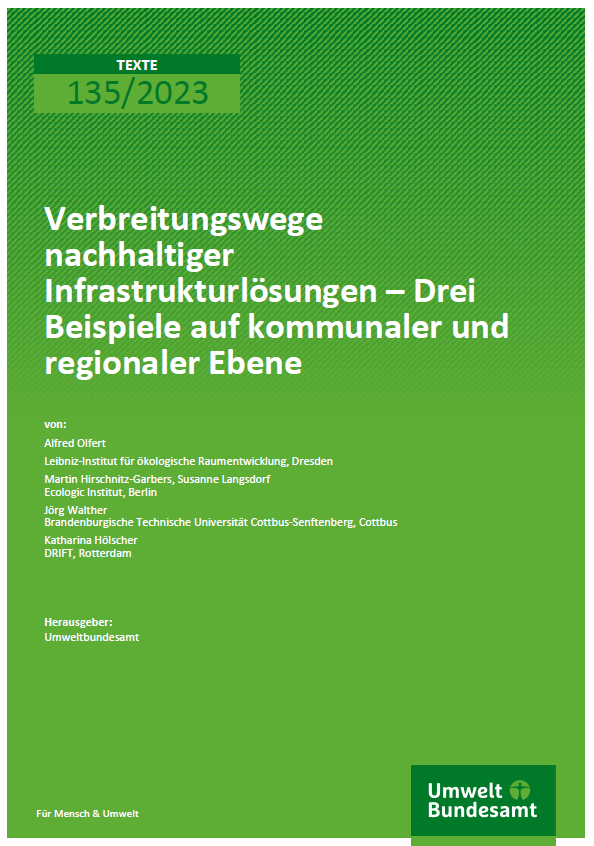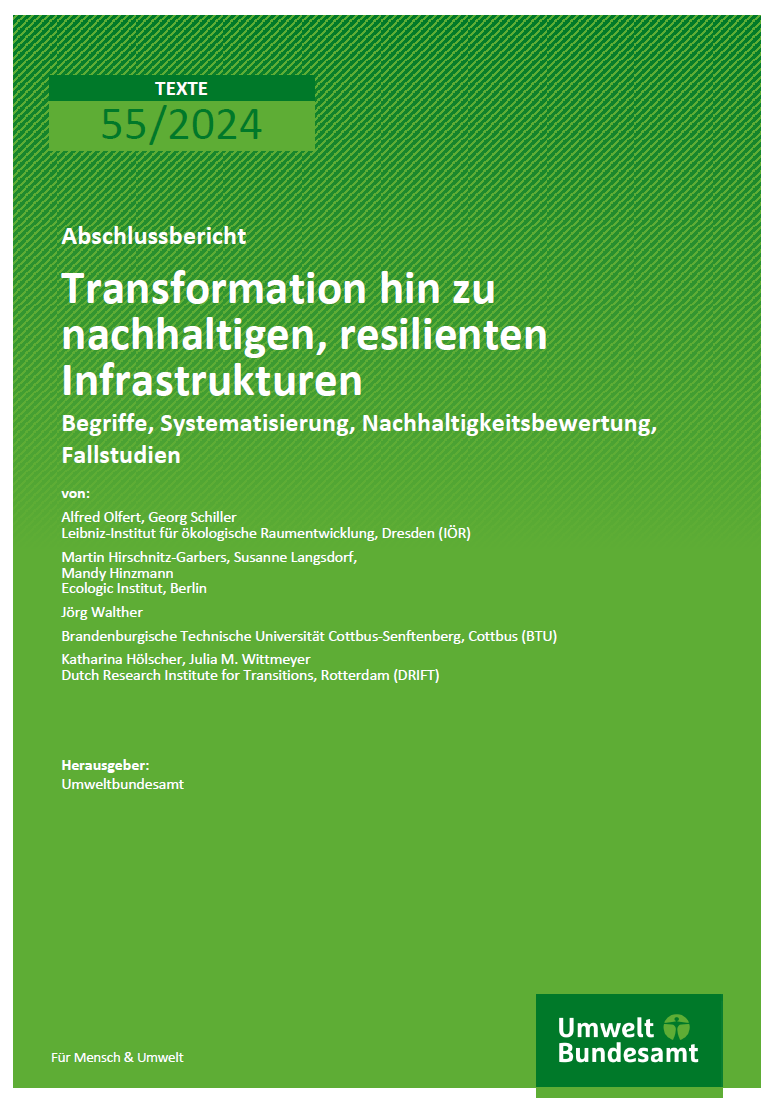Verbreitungswege nachhaltiger Infrastrukturlösungen
Drei Beispiele auf kommunaler und regionaler Ebene
- Publication
- Citation
Olfert, Alfred et al. 2023: Verbreitungswege nachhaltiger Infrastrukturlösungen – Drei Beispiele auf kommunaler und regionaler Ebene. Teilbericht. Umweltbundesamt: Dessau-Roßlau.
This report analyzes how innovative, sustainable infrastructure solutions can be successfully disseminated through specific mechanisms and under certain conditions. It emphasizes the importance of cooperative networks and suitable framework conditions for the dissemination of innovations at municipal and regional level.
Innovation and dissemination of sustainable infrastructure
The dissemination of infrastructure solutions is described as a four-stage process that includes local establishment through internal growth mechanisms, regional replication through mutual learning, the uptake of solutions by regional and supra-regional actors (replication or transfer) supra-regional establishment through standardization. Innovative infrastructure solutions developed in local niches require a supportive environment of institutional funding, committed individuals and functional networks in order to be adapted and established regionally and nationally.
Case studies on infrastructure dissemination
Three case studies illustrate specific dissemination pathways: the establishment of the hydrogen economy in the district of Steinfurt, the development of an intermodal transport service in Dresden, and the promotion of a CO₂-neutral district in Cottbus. These examples show how infrastructure solutions can be successfully disseminated and established through strategic networking, the exchange of expertise and adaptation to local conditions.
Strategies and recommendations for practice
The report concludes with recommendations for municipalities and regional decision-makers on how to accelerate the dissemination and establishment of sustainable infrastructure solutions by creating favorable framework conditions and promoting innovation networks. The discussion of supportive framework conditions also provides guidance for political actors at state and federal level on how they can effectively support local and regional innovation processes.




